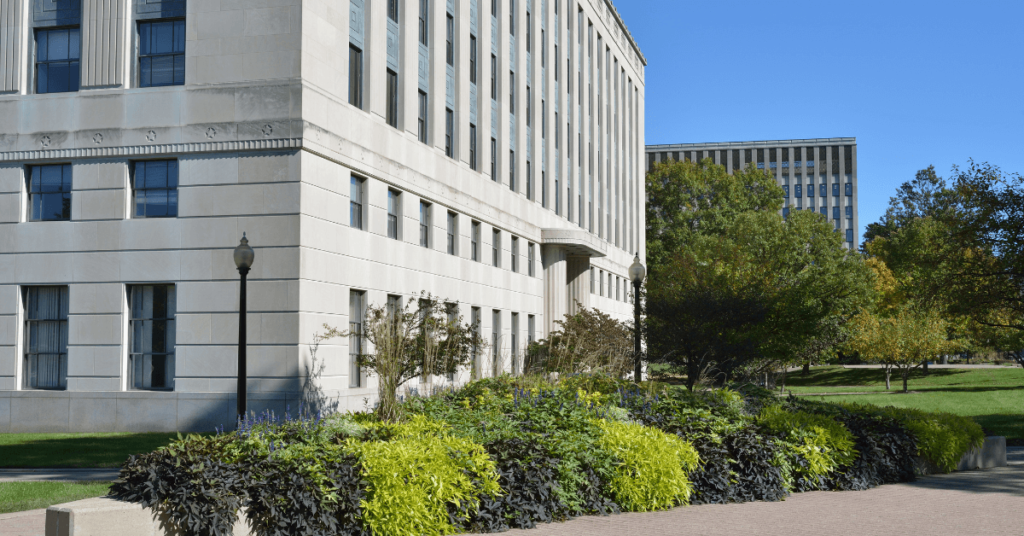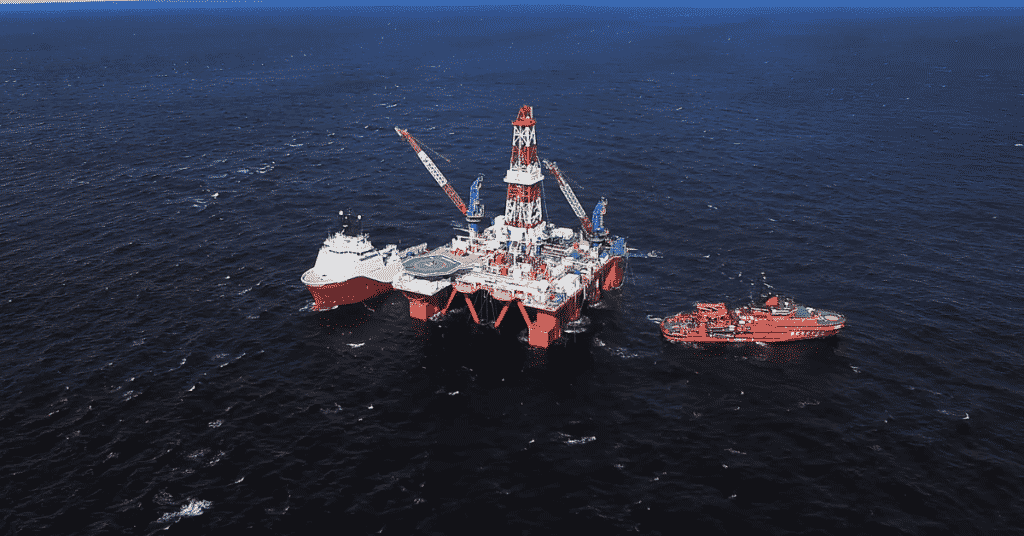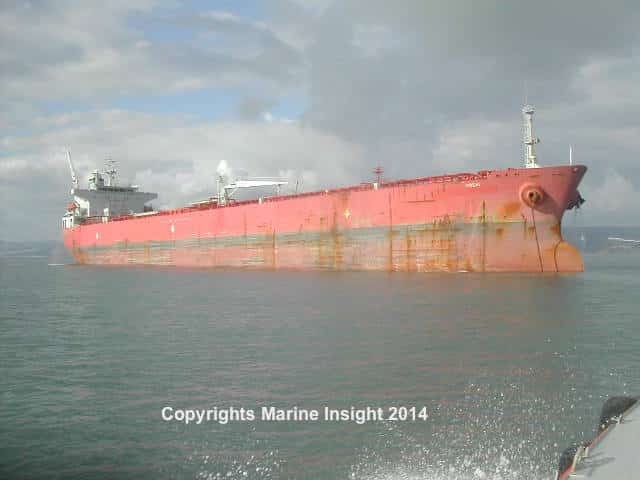10 Facts About The Gulf Of Gabes
The Gulf of Gabes, also referred to as Lesser Syrtis, lies on the east coast of Tunisia in the Mediterranean Sea off North Africa.
This shallow gulf in the southwestern part of the Strait of Sicily is surrounded by the Kerkena Islands on the northeastern side and the Djerba Islands on the southeastern side. The Gulf has a maximum length of 50 km and a maximum width of 70 km, with depths ranging from 20 to 50 m.
Read along to learn more interesting facts about the Gulf of Gabes.
Experiences one of the highest tides in the Mediterranean
The Gulf of Gabes stretches from the coast of Sfax to Djerba, and at the head of the gulf is where tides with the highest range, going up to 2.1 m, have been recorded. However, little is known about the hydrodynamics of the region.
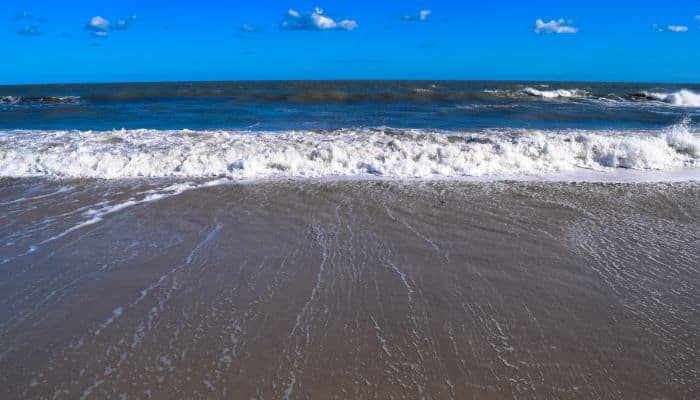
Several factors, like tidal and wind-induced drift currents, baroclinic currents, etc., influence the residual circulation and water renewal. The Atlantic Current in the western Mediterranean enters the Strait of Sicily and divides into 2 branches; one flows to the southeastern Mediterranean and the other to the south, influencing the circulation at the mouth of the Gulf of Gabes.
Known by different names like Khaleej Gabiss
The Gulf of Gabes has been called by different names throughout history. However, it is popularly called Khaleej Gabiss by North Africans and Tunisians.
It has been called Syrtis Minor in Latin by Pling the Elder, while Strabo used the name ‘’Syris of the lotus-eaters’.
Strabo calls Gabes a vital entrepot of the Lesser Syrtis. In Book IV of the Histories, Herodotus mentions a disturbing ritual performed in the region.
During a festival for Goddess Athena, the young women were divided into 2 camps and then fought each other using stones and wooden clubs. It is said that they enacted a ceremony performed by their ancestors to honour Athena, and those women who died from the wounds and injuries were called false virgins.
The Gulf of Gabes has a Mediterranean climate
The region has a Mediterranean climate with mild winters and scorching dry summers as it lies near the Sahara Desert. The city of Gabes also gets scanty rainfall and experiences a desert-like climate; however, it is still tempered by the surrounding seawater.
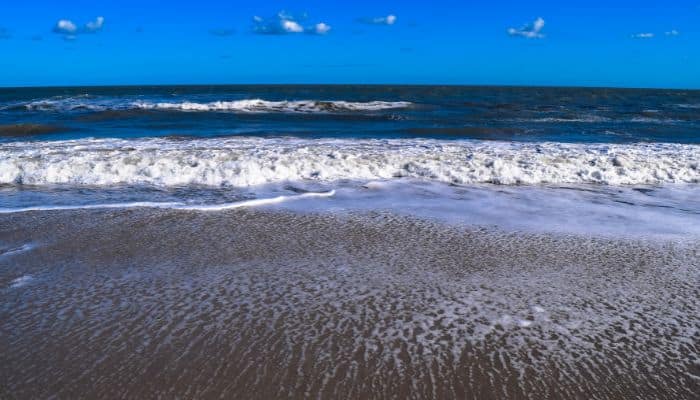
Several salt lakes called chotts or shatts are scattered east-west at the northern edge of the Sahara, spanning from the Gulf of Gabes into Algeria.
The Gulf of Gabes is known for its biodiversity
The Gulf of Gabes, with its huge continental shelf and shallow waters, is a unique habitat due to its massive Posidonia Oceanica Seagrass meadows, said to be the biggest in the Mediterranean Sea. They absorb carbon dioxide, and their carbon absorption rate surpasses that of tropical forests.
Over 650 species of marine animals live here, and several migratory species depend on this region as a nursery and spawning ground. Cephalopods, turtles and crustaceans listed on IUCN’s list of endangered species come to the waters of the Gulf to reproduce.
The Gulf of Gabes is also home to Tuna sponges and sharks. Studies in the area have shown that it is a nursery area for elasmobranch sharks and rays.
It has 2 coastal ecosystems which act as nurseries for many fish, like Boughrara and El Bibane Lagoons. Boughrara is the biggest lagoon in Tunisia, spanning 123552.69 acres and housing 72 species of fauna, including 30 fish species. Also, 78% of Tunisia’s lagoon fishermen are here.
El Bibane Lagoon, near the Libyan border, is home to 60 fish species distributed among 31 families. Animal species in the Gulf of Gabes is 667 and is dominated by Pisces species, molluscs and sponges.
Gabès and Sfax are major ports on the Gulf of Gabes
Port of Gabes lies 60 km west of Djerba, offering a sheltered harbour. It has 2 breakwaters and mainly deals with grains, fertilisers, chemical products, oil and cement.
The commercial port of Gabes is mainly engaged in the transit of chemical products for the neighbouring factories in the industrial estate of Gabes city.
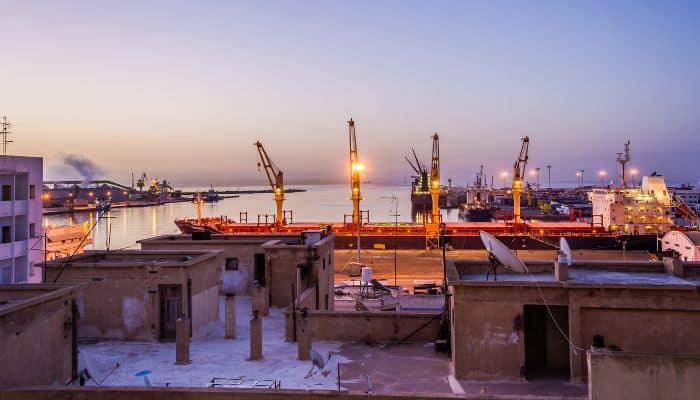
The main import items are sulphur and ammonia, while the major goods for export are phosphoric acid and phosphate fertiliser. Approximately 400 vessels visit the port, and 4,100,000 tonnes of cargo is handled at the facility annually.
Another principal port is Sfaz, lying at the northern entrance of the Gulf of Gabes, between Djerba and Sousse, west of Kerkenah islands. It has three harbours, and its main berths are at Bassin Principal and Nouvelle Darse. The east side of the latter accommodates tankers, while Basin des Voilliers on the western side of the harbour is utilised by government marine craft.
A massive fishing and leisure harbour lies near the main harbour. The port receives shipments of grain, sulphur, general cargo and petroleum products while it exports salt, sponges, dates, olive oil, and phosphates.
Sfaz Port has 15 berths that are visited by 1700 vessels. The port handles 5,500,000 tonnes of cargo annually.
Djerba and Kerkana Are Two Tunisian Islands in the Gulf of Gabes
The two islands of Djerba and Kerkana are popular tourist destinations. Djerba is the biggest island in North Africa and spans 514 sq km in the Gulf of Gabes off the Tunisian coast. In 2023, it was designated a World Heritage Site by UNESCO, given the unique history of its Jewish minority.
According to some legends, it was the island of lotus-eaters where Odysseus was stranded during his journey through the Mediterranean Sea. Referred to as Meninx until the 3rd century AD, Strabo also mentions that there was an altar of Odysseus.
The island is a must-visit for nature lovers. It is also known for the wetland called Djerba Bin El Ouedian, which attracts many migratory birds.
Kerkennah Island is made up of a group of tiny islands. It was once used as a port in the era of the Roman Empire. The most visited places on the island are Gharbi and Chergul.
Kerkannah islands are low-lying, and the archipelago has an area of 160 sq km. Populations on these islands decreased after the 1980s, owing to the drought that affected irrigation, availability of water and the quality of life in general.
Many wealthy Tunisians come to spend their holidays here in their private homes on the island. Tourists also arrive from all over the world.
The city of Gabes lies along the Gulf and has a rich history
One of the largest Tunisian cities, Gabes is also an industrial centre, with its main industries being cement, bricks, oil refineries and chemical products.
This city was once home to several empires and settlers, the first being the Carthaginians who lived here before the Roman Empire took over. During Roman times, Gabes was called Tacape and was a part of the province of Tripolitania.
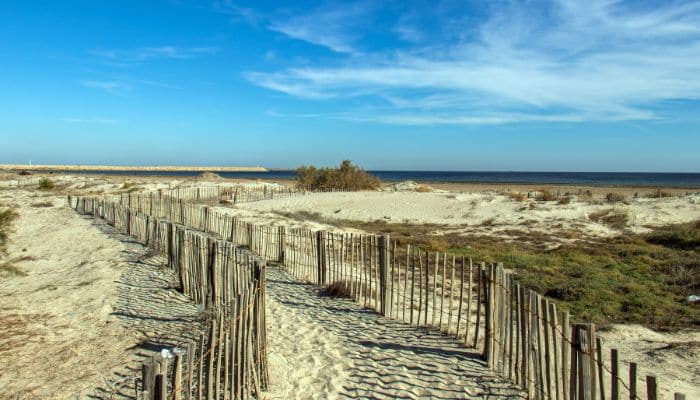
The economic condition worsened during the Arab conquest in the 7th century. After the Ottoman Rule declined, the city of Gabes and its port were revived gradually during the French Protectorate from 1881-1955. Presently, the city is home to more than 150,000 people and is filled with historical places.
Gulf of Gabes is home to Tunisia’s Oil and Gas Mines
The Gulf of Gabes has two important ports, Gabes and Sfax, 2 major ports of Tunisia, with Gabes serving as the administrative and economic hub.
The Gulf also has oil and gas mines, such as the Ashtart Field and the Chergui Field. The Ashtart Oil Terminal lies just outside the Gulf of Gabes, where tankers can tranship the oil.
The Ashtart Field was discovered in 1971 and has been operational since 1974. It has been developed by Elf-Auiaine Oil Company and comprises a single reservoir with a 70 m thickness. The Ashtart field produced 839 m3/d during the year 2018.
Chegui gas field lies in Tunisia and is operated by Perenco Tunisia. It is situated in block Kerkennah West and Chergui with a water depth of 7ft.
About 80% of Gulf of Gabes seafood is exported to EU Nations

The fish exports of Tunisia are a crucial revenue source for the country and those involved in it. This is especially true for the region surrounding the Gulf of Gabes since it has the biggest part of the Tunisian fishing fleet, offering jobs to several people in the fisheries sector. About 80% of seafood is exported to EU nations, mainly Italy and Spain.
Famous for the ancestral fishing method called Charfia
A characteristic feature of the Gulf of Gabes is the use of an ancestral method of fishing, which has been popular among the fishing communities of the Kerkennah islands. Called Charfia, this includes a fixed triangular barrier of palm leaves or nets that direct fish to certain chambers when the tide retreats.
The chamber has small baskets with an opening through which the fish enters and gets trapped. Fishers visit their traps regularly to empty their baskets full of fish, letting the juvenile fish go.
This method has been inscribed on UNESCO’s list of the intangible cultural heritage of humanity in 2020.
Another method of fishing is popular in the region, called kiss trawling. Kiss, meaning bag in Arabic, is a word used in the Gulf of Gabes region to refer to small bottom trawls that are mounted on coastal fishing vessels in very shallow waters.
Though illegal in Tunisia, it is used by people to earn a little extra in a nation with poverty due to economic and political crises. However, this is a threat to traditional coastal fishing communities. It also causes a threat to the seagrass meadows in the Gulf of Gabes.
The number of such trawlers has increased from 416 to 576 between 2018 and 2022. Also, a new fishing port was constructed in Sisi Mansour, and another one called Sidi Youssef on the Kerkennah islands was rebuilt and expanded.
Both these ports had kiss trawlers, while Sidi Mansour had the largest, numbering 159. This points to the fact that the situation has indeed worsened and needs to be addressed immediately by the authorities to protect this unique ecosystem.
You might also like to read-
- 8 Interesting Facts About Cape Route
- 10 Interesting Facts About The Gulf of Suez
- Top 10 Fjords in Norway
- 7 Major Ports Of Croatia
- 10 Biggest Straits Of The World
Do you have info to share with us ? Suggest a correction
Disclaimer :
The information contained in this website is for general information purposes only. While we endeavour to keep the information up to date and correct, we make no representations or warranties of any kind, express or implied, about the completeness, accuracy, reliability, suitability or availability with respect to the website or the information, products, services, or related graphics contained on the website for any purpose. Any reliance you place on such information is therefore strictly at your own risk.
In no event will we be liable for any loss or damage including without limitation, indirect or consequential loss or damage, or any loss or damage whatsoever arising from loss of data or profits arising out of, or in connection with, the use of this website.
Disclaimer :
The information contained in this website is for general information purposes only. While we endeavour to keep the information up to date and correct, we make no representations or warranties of any kind, express or implied, about the completeness, accuracy, reliability, suitability or availability with respect to the website or the information, products, services, or related graphics contained on the website for any purpose. Any reliance you place on such information is therefore strictly at your own risk.
In no event will we be liable for any loss or damage including without limitation, indirect or consequential loss or damage, or any loss or damage whatsoever arising from loss of data or profits arising out of, or in connection with, the use of this website.

About Author
Zahra is an alumna of Miranda House, University of Delhi. She is an avid writer, possessing immaculate research and editing skills. Author of several academic papers, she has also worked as a freelance writer, producing many technical, creative and marketing pieces. A true aesthete at heart, she loves books a little more than anything else.
Related Articles
Daily Maritime News, Straight To Your Inbox
Sign Up To Get Daily Newsletters
Join over 60k+ people who read our daily newsletters
By subscribing, you agree to our Privacy Policy and may receive occasional deal communications; you can unsubscribe anytime.

